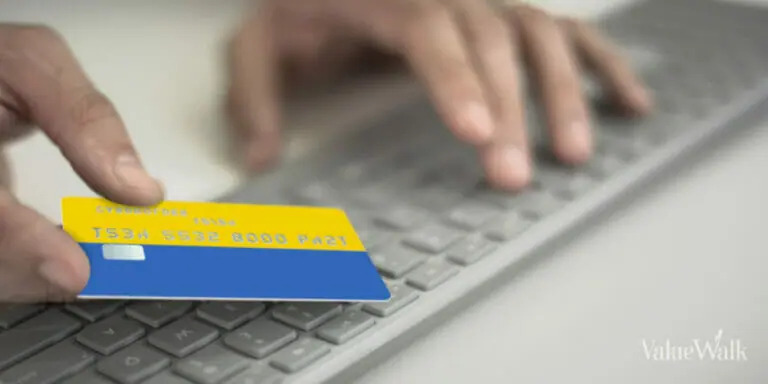To manage and pay your Tractor Supply credit card, you need to create an account, which you will want to access.
When a credit card holder requests a cash advance, the card issuer will withdraw funds from their available balance or an available line of credit and supply them with a certain amount in cash. Depending on the credit card issuer, this amount can range from $10 to hundreds or thousands of dollars. The user will then be charged a cash advance fee on that amount, usually starting immediately after they receive the money.
Credit card cash advances typically have some restrictions that limit how much money can be taken out at once. There are often minimum and maximum amounts that you can withdraw in a single transaction, which vary depending on the issuer. Additionally, some credit cards may limit the number of times per day or month that you can request a cash advance.
Credit card cash advances should only be used in emergencies if no other options are available. They can be helpful when you’re in a financial bind, but they can also quickly put you in a deeper hole if not used responsibly. To avoid this, understand the fees and interest rates associated with the cash advance before taking it out and make sure you can pay it back quickly. It’s also essential to track how much money you’ve taken out and how much you still owe.
Credit card issuers typically charge a flat fee for cash advances in addition to an interest rate. The fees are usually much higher than what is charged for regular credit card purchases, and the interest rates can be 1.5% to 3.5% of each transaction’s total. It’s important to note that these charges start accruing immediately after the advance is received, so paying back the money as soon as possible is essential to avoid accumulating significant debt.
Some credit card companies often charge high transaction fees on cash advances, usually between 3-10% of the total amount withdrawn. This fee is in addition to any other fees associated with the cash advance.
When making purchases with your credit card, you usually have a “grace period” of 21 days before interest is charged. However, when taking out a cash advance, this grace period does not apply, and interest accumulates immediately.
Interest rates on cash advances are typically much higher than those for regular purchases and can range from 17.99% to 29.99%, making it challenging to pay off the loan.
If you use an ATM for a cash advance, you may also incur an ATM fee, usually between $2-5. Additionally, some credit card companies charge a cash advance fee at ATMs, so factor in these potential costs before withdrawing cash.
Credit card cash advances can cover unexpected expenses but can also harm your credit score if not managed properly. Taking out an advance increases your credit utilization ratio, which can negatively affect your score if it becomes too high.
Cash advances add to your overall credit card debt, which can further lower your credit score. Lenders view high debt amounts as a risk, potentially leading to denied future loan applications.
Repaying cash advances on time helps maintain a positive credit history. However, late or missed payments will be noted on your credit report, negatively impacting your score.
By following these tips, you can minimize the negative impact of credit card cash advances on credit scores.
Pay off the Advance as Soon as Possible
The best way to minimize the impact of a cash advance on your credit score is to pay it off as soon as possible. This will reduce your credit utilization ratio and help keep your total debt low, which can positively affect your credit score, one of the most critical factors in calculating credit scores.
This means that it is easy to accumulate debt very quickly, and if payments are made on time, credit scores can improve significantly. Cash advances tend to count more heavily against the available credit limit than regular purchases.
Use Other Sources of Funding
If you need emergency funds, looking for other funding sources is always better before taking out a cash advance. This could include using savings or taking out an installment loan with lower interest rates and longer repayment terms than a credit card cash advance.
Utilize Credit Card Rewards
If you need to take out a cash advance, using a credit card with rewards can help minimize the impact. Some credit cards offer cash back or other rewards for purchases made with the card, which you can use to offset the cash advance cost.
How To Use Your Credit Card At An ATM?
Once you have determined that it is safe to use your credit card at an ATM, follow the steps below:
- Locate an ATM connected to the credit card provider or a compatible bank. Check the back of your credit card for the logo of its provider to determine which ATMs are suitable for use.
- Insert your credit card into the machine until it is securely placed, usually facing up and the chip facing you.
- Wait for the machine to recognize your card and prompt you to enter your PIN (Personal Identification Number).
- Once it has accepted your card and PIN, select “Credit” rather than “Debit” from the available options on the screen.
- Enter the amount of money you wish to withdraw.
- Review the withdrawal details on the screen and confirm that everything is correct.
- Once you have confirmed the transaction, your card will be ejected from the machine, and your cash will be dispensed.
- Collect your cash and applicable receipts, and return your credit card before leaving the machine area.
- Record the withdrawal in your budget book or app, and check your credit card statement following the transaction to ensure everything is correct.
- Use the cash to make purchases or save it securely until you need it again.
Take a Look at Can you Withdraw Money From a Credit Card at an ATM?

You must understand a few things before using your credit card at an ATM:
- Remember that you cannot use all credit cards at an ATM, so check with your card issuer before attempting to use your card.
- Most ATMs have a daily limit on how much cash you can withdraw, and your credit card’s credit limit also affects how much cash you can access daily. So even if you can use your credit card at an ATM, understanding these limitations is essential.
- Cash withdrawals may be possible if the ATM is disconnected from your bank or credit card provider, but you may incur additional fees. Be sure to read all the terms and conditions before using the ATM.
- Understanding how to use a credit card at an ATM and the potential fees can ensure you get the cash you need without any surprises. Know your limits, and factor in any additional costs before withdrawing money with your credit card. With this knowledge, you can confidently use your credit card at an ATM.
Other Alternatives
ATMs are a convenient way to access your money, but using a credit card is not always an option. Moreover, making ATM withdrawals using a credit card can be risky and costly. Fortunately, other options exist for getting cash from an ATM without a credit card. Here are some alternatives that may work for you:
Taking a Loan from Friends & Family
Getting a loan from friends or family is ideal for many people who have exhausted other options and need immediate access to cash. This option is worth exploring if you have a close relationship with someone and can trust them. Just make sure to keep clear lines of communication open so that if there are any issues, such as late payments or being unable to return the money, it does not damage your relationship.
Lending Circle
A lending circle is a group of friends or family members who come together to provide each other with small loans. It works like a typical loan: you should pay it back at the same time and at the agreed-upon interest rate. The main advantage is that it provides access to cash without going through the more formal process of obtaining a loan from a bank or other financial institution.
Use the Credit Card to Purchase
If you don’t need cash immediately, another option is to use your credit card to purchase items and then pay off the balance when possible. This allows you to track your spending and ensure you don’t go into debt. This can be a good option if you are trying to build or rebuild your credit and want to focus on making small, manageable payments rather than taking out a large sum of money at once.
Debt Consolidation Loan
If you have existing debt on multiple cards and want to simplify your payments, you can consider taking out a debt consolidation loan. This type of loan allows you to combine all of your debt into one payment, making it easier to stay on top of and manage your payments. The interest rate for these loans will depend on the lender and your creditworthiness, so shop for the best rate before committing.
Debit Card
A debit card is an excellent alternative for getting cash from an ATM. You can directly access the money in your bank checking account with a debit card. Unlike a credit card, there is no need to pay off any balance at the end of the month; you withdraw cash and spend it as needed. There may be fees associated with using an ATM, so check with your bank or credit union before withdrawing.
Prepaid Card
A prepaid card is another option for getting cash from an ATM. With this type of card, you can load money onto it and then use it at an ATM to withdraw cash. Prepaid cards are often used by people who don’t have access to a checking or savings account. Like debit cards, fees may be associated with using an ATM, so check before withdrawing.
Cash Advance
If you have a credit card, you can use it to get cash at an ATM through a cash advance. This is a short-term loan you can take out against your credit limit. A fee is usually associated with this transaction, and the interest rate is often higher than other credit card transactions. Be sure to read the fine print before taking out a cash advance.
Check Cashing
If you can’t access a bank account or credit card, you can still get cash from an ATM by cashing a check. Many ATMs have the option of check-cashing services, which allow you to deposit your check and receive cash in return. However, additional fees may be associated with this service, so you must read the terms and conditions before cashing a check.
Gift Cards
Another option for getting cash from an ATM is to use a gift card. Many stores, restaurants, and other businesses offer gift cards that you can use at ATMs to withdraw cash. The withdrawal amount will depend on the card’s balance, but it’s usually not more than the amount on the card. Be sure to check with the issuer of the gift card before using it at an ATM.
Regardless of your chosen method, read all terms and conditions before making any withdrawals or purchases. This will ensure that you are aware of any fees or other restrictions associated with the transaction.
How Do I Find My 4-Digit PIN for My Credit Card?
If you are trying to find your 4-digit PIN for your credit card, the best place to start is by contacting your financial institution. Your bank or credit union may be able to provide you with a new PIN if needed.
However, it is essential to remember that most banks and credit unions require additional authentication before issuing a new PIN. If you have forgotten your original PIN or if it has been compromised, you will need to contact the bank directly for assistance.
What Happens if You Withdraw Cash from a Credit Card?
When you withdraw cash from your credit card, the amount is added to your balance. This can increase your total debt and make it more costly to pay off. Your interest rate may also rise when you take out a cash advance from a credit card because this type of transaction is considered a higher risk than regular purchases.
You may also be charged a cash advance fee. Additionally, you’ll be subject to any applicable APR on the cash advance amount instead of the usual purchase rate. It’s important to consider all these factors before taking a cash advance from your credit card.
Can I Withdraw Money from My Credit Card at Any ATM?
Yes, it is possible to withdraw money from your credit card at any ATM. However, keep in mind that this will be considered a cash advance, which may incur additional fees.
It’s also important to note that you can typically only use most credit cards for withdrawals up to a certain limit. Furthermore, the interest rate for cash advances on credit cards is generally much higher than the regular purchase interest rate, which can add up quickly if you’re not careful.
Can You Reset Your Credit Card PIN at an ATM?
Cardholders can reset their credit card PIN through an ATM or online. If you reset your PIN at an ATM, many banks allow customers to enter a new four-digit number. When selecting a new PIN, remember that you cannot use the same number more than once.
Additionally, PINs must be kept secure and not shared with anyone else. If you reset your PIN online through your net banking account, customers can select a new four-digit number or use an automatic PIN generation system.
Conclusion
ATMs are a convenient way to get cash when needed, but not all ATMs accept credit cards. Before using your card at an ATM, check with your bank or credit card issuer to see if their cards are accepted. If your card is not accepted, you can withdraw cash from a teller at a participating bank, but keep in mind that this will likely involve fees from both the bank and your credit card issuer.
With some planning, you can avoid any inconvenience or unwanted fees.
 Our Editorial Standards
Our Editorial Standards
At ValueWalk, we are dedicated to delivering reliable, well-researched information. Our editorial team works diligently to guarantee that all our content is accurate, trustworthy, and fully transparent.










